Will Betelgeuse blow? Will Taurus gore Orion? Read below:
Recently, the star Betelgeuse (orange "shoulder" of Orion) faded from the 10th brightest in the sky to about 26th. No longer a beacon, it faded almost to the level of Orion's belt, and well below the level of blue Rigel (Orion's forward foot). This is the most faint ever recorded (observes have been tracking it with the use of reference stars for ~200 years). Many in the astronomy field were excited by this as it might be the harbinger of a supernova in our "back yard", an event not witnessed in living memory.
The relatively dark image of orion below was processed to preserve relative brightness and color. you may need to darken the room and/or adjust your monitor to see it well. pretend you're looking at stars...
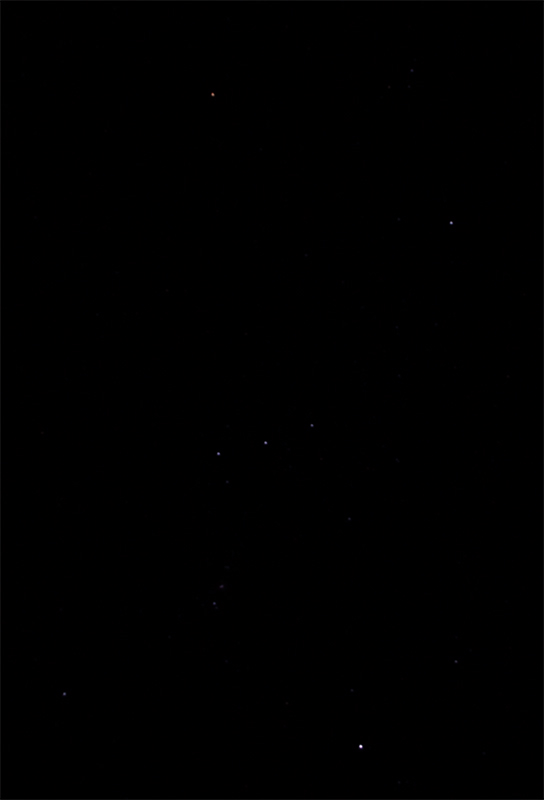 |
| Orion linear stretch to preserve relative brightness. Note that orange Betelgeuse (upper left) is closer to the brightness of the belt stars,than bright Rigel (lower right) |
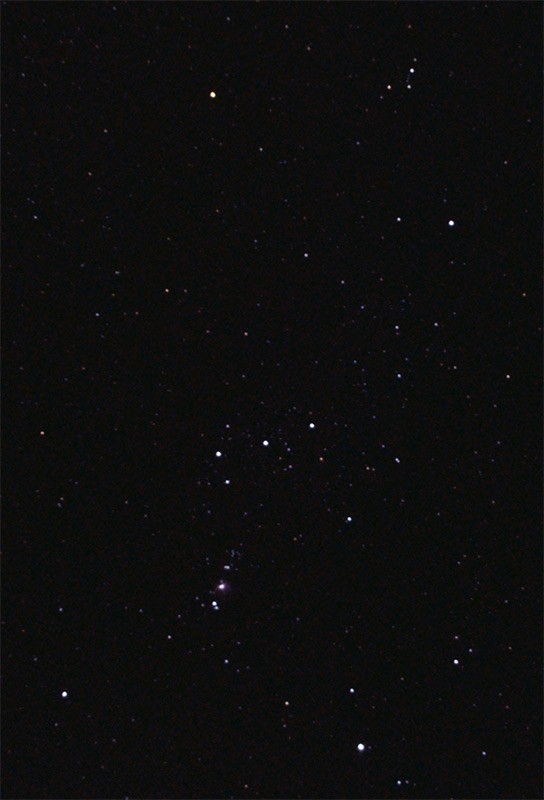 |
| stretched version showing orion nebula in the sword below the belt |
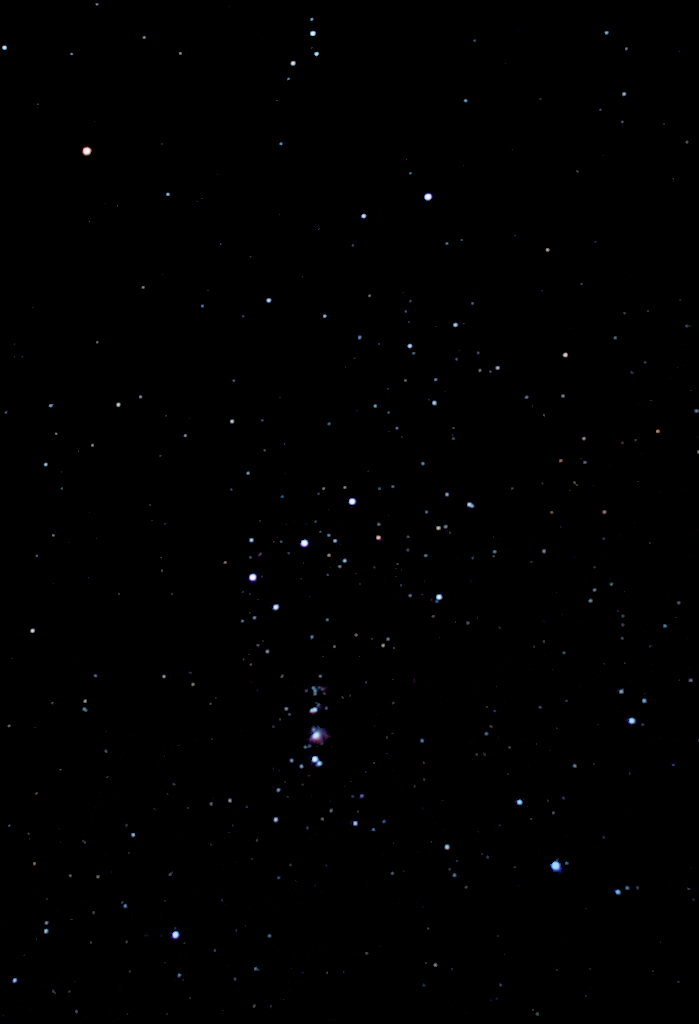 |
| Here's my last attempt from 2005. Is Betelgeuse brighter? |
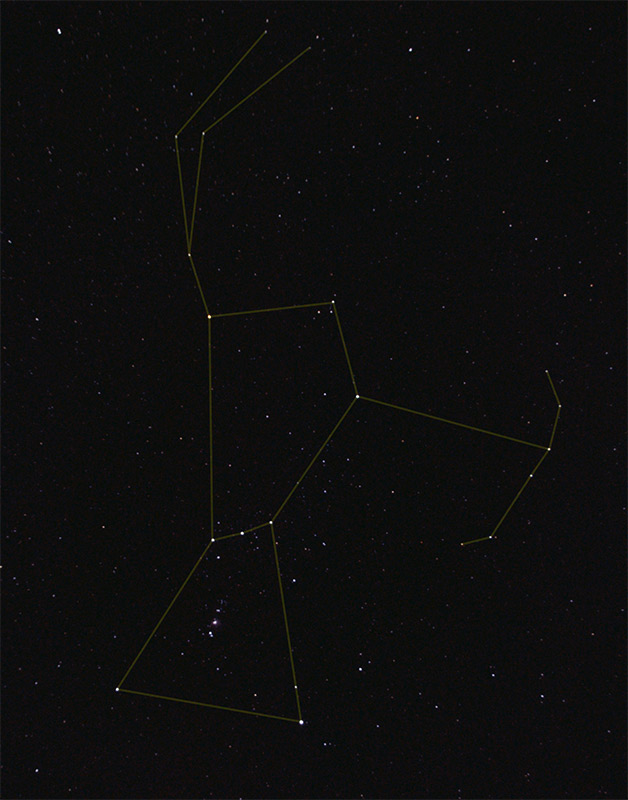 |
| full constellation just for fun (2/26/2020) |
If Betelgeuse were to go supernova, it would likely be so bright it would be easily visible during the day. It might eventually leave Orion's shoulder with a blood red nebula the size of the full moon: as if Taurus' horn gored Orion's shoulder (Pamela Gay, Astronomycast).
Why might this happen? Betelgeuse is a cool red supergiant star (diameter the size of Jupiter's orbit) who's brightness varies periodically with time. The variation in brightness is due to change in the actual size of the star. For reasons not entirely clear, the star periodically shrinks and expands, creating a smaller or larger surface from which light shines.
The thing about supergiant stars is that they are known to go supernova. They "burn" (fuse elements) so fast, that they eventually run out of fuel (actually they fuse elements up to the size of iron which doesn't like to fuse and stops the process). When that happens, the light pressure holding the stellar surface out disappears and the star gravitationally collapses until...BAM supernova leaving a tiny neutron star in the center (like the crab nebula).
So perhaps the fainting was due to a pre-supernova collapse...
To the dismay of some, Betelgeuse began to brighten again in late February 2020. A Spectrographic study indicated that the dimming was due to intervening dust expelled from the star.
Addendum: Subsequent work suggested it was giant sunspots instead...
a few more gems in orion:
image details:
Orion constellation
Nikon D60
stock lens (18-55) @36 mm f/5.3
12 x 5 sec
Eastbluff, CA 2/26/2020
2005
Canon Digital Rebel 300d
stock lens
Orion nebula
FS60C f/4.2 FR Baader 8.5 nm Oiii/CS 10 nm Ha filters, H9
Ha 35x5 min + 26x30 sec, Oiii 29x5 min +33x30 sec
12/5,8,9/2008
los alamitos, CA bortle white skies
poor seeing fair transparency for area
Flame nebula
fs102 idas LPR H9C
30x5 min
it was tough controlling alnitak in processing
12/2006
los alamitos, CA bortle white skies
Horsehead nebula
FS 102 @~f/6 (618mm) with TOA reducer; IDAS LPR, CS 10 nm HA; h9/h9c; guiding with toucam on celestron f/5 80mm wideview.
rgb 83x5 min, luminance 66x2 min, HA 19x20 min
12/10-16/2007; los alamitos, CA; usual bortle white skies; several nights of above average transparency (for the region); fair to poor seeing HFD 3.8-4.7
a few more gems in orion:
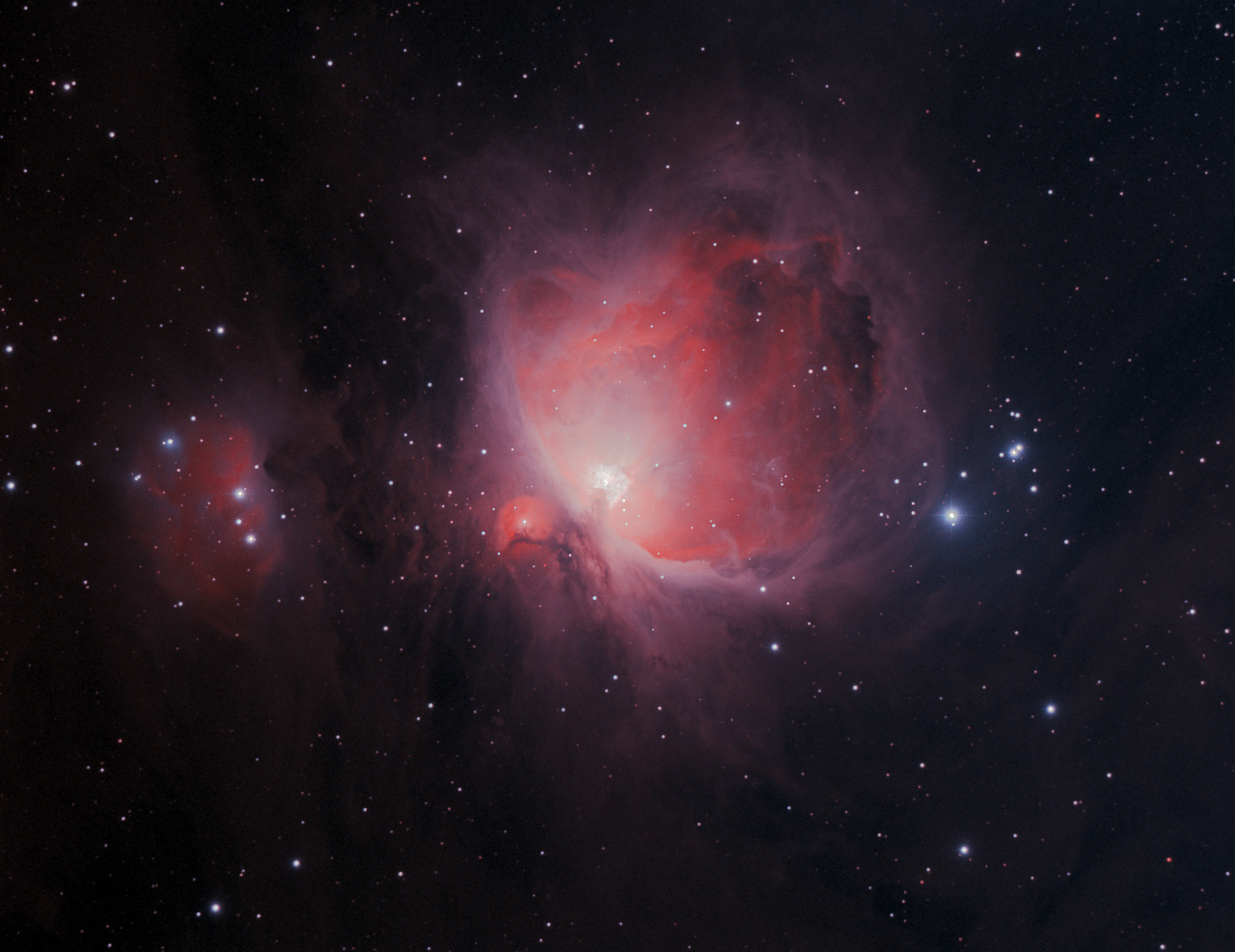 |
| Orion Nebula (Ha-OIII) (1/2009) Click for full size |
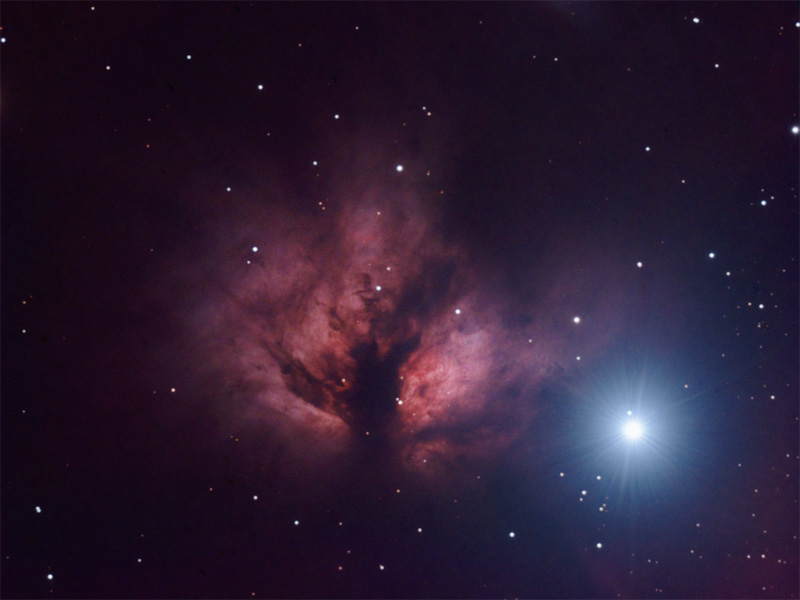 Flame nebula in orion with belt star alnitak blazing away (12/2006) 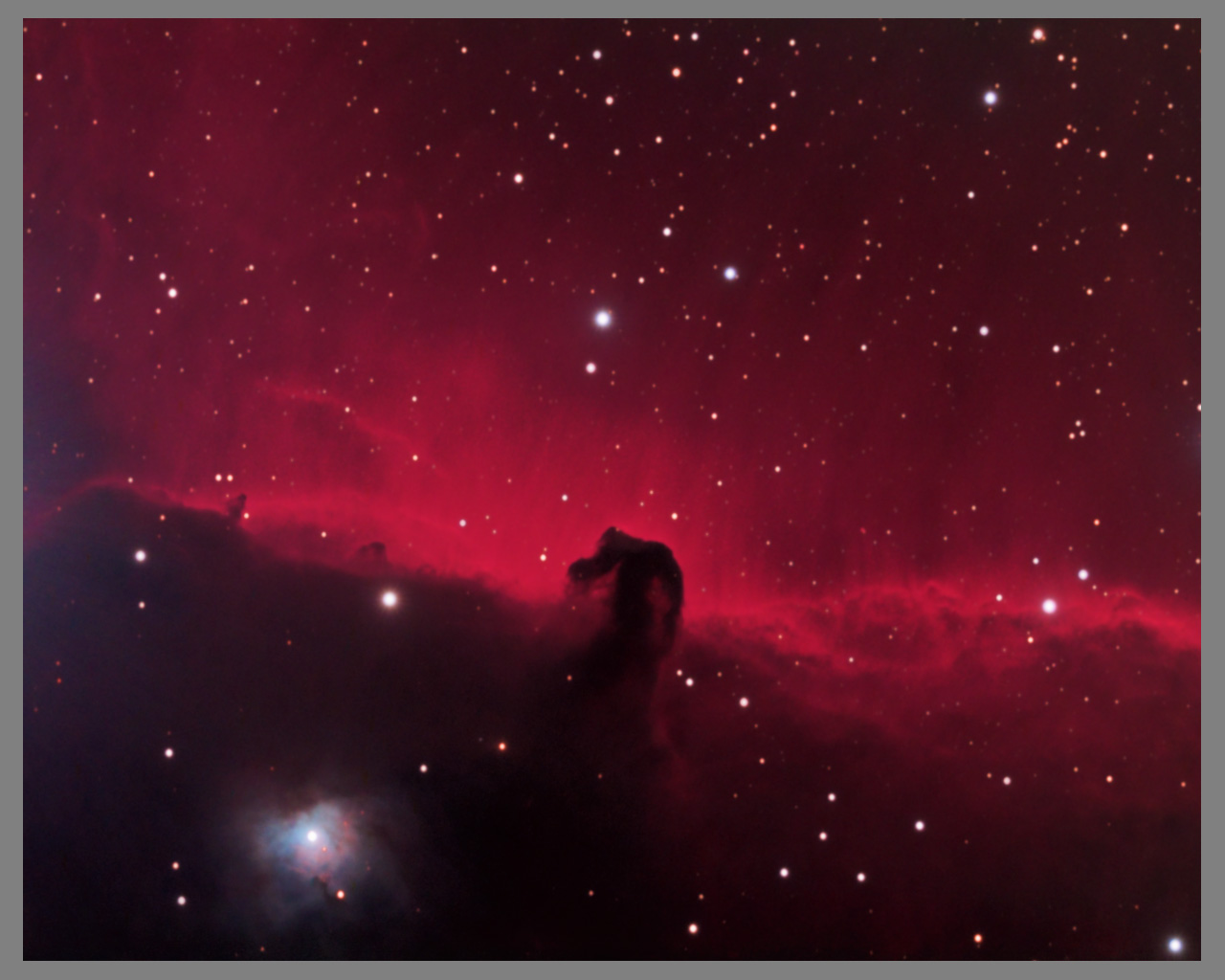 |
| Horsehead nebula-blue glare left caused by Alnitak (off frame) in orion's belt. (HaLRGB 12/2007) |
Orion constellation
Nikon D60
stock lens (18-55) @36 mm f/5.3
12 x 5 sec
Eastbluff, CA 2/26/2020
2005
Canon Digital Rebel 300d
stock lens
Orion nebula
FS60C f/4.2 FR Baader 8.5 nm Oiii/CS 10 nm Ha filters, H9
Ha 35x5 min + 26x30 sec, Oiii 29x5 min +33x30 sec
12/5,8,9/2008
los alamitos, CA bortle white skies
poor seeing fair transparency for area
Flame nebula
fs102 idas LPR H9C
30x5 min
it was tough controlling alnitak in processing
12/2006
los alamitos, CA bortle white skies
Horsehead nebula
FS 102 @~f/6 (618mm) with TOA reducer; IDAS LPR, CS 10 nm HA; h9/h9c; guiding with toucam on celestron f/5 80mm wideview.
rgb 83x5 min, luminance 66x2 min, HA 19x20 min
12/10-16/2007; los alamitos, CA; usual bortle white skies; several nights of above average transparency (for the region); fair to poor seeing HFD 3.8-4.7